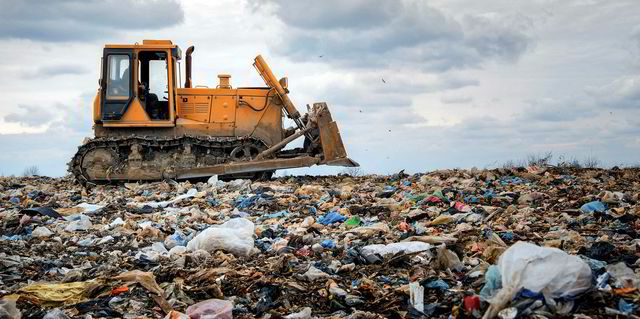California startup offers to recycle household waste into hydrogen
 California-based startup Ways2H has developed a technology for recycling household waste into pure hydrogen, while offering a “carbon-negative” solution.
California-based startup Ways2H has developed a technology for recycling household waste into pure hydrogen, while offering a “carbon-negative” solution.
The company plans to take solid household waste (SHW), including plastics and hazardous medical substances, to turn them into hydrogen. The cost of such hydrogen, the company says, will be lower than the “green” H2 produced from water by electrolysis using renewable energy sources.
“The cost very much depends on what kind of raw materials we have, but now it’s comfortable for us to show the figure of 5 dollars per kilogram”, – says Jean-Louis Kindler, the Ways2H CEO. “And we can cut it by half, say, to 3 dollars per kilogram per for five years. In addition, our technology solves another problem – the waste crisis”.
For comparison, the company cites the cost of “green” hydrogen at $ 11-16 per kg, referring to Hydrogen Europe (according to Bloomberg, the cost of green hydrogen is already much lower – from $ 2.50 to $ 6.80 per kg).
One of the reasons why the cost of hydrogen in Ways2H is relatively low is that the raw materials have a negative cost – municipalities pay specialized companies for waste collection and disposal.
The company bases its calculations on the disposal cost of about $ 70 per ton.
“We see cases in California where municipalities have to pay more than $ 100 per tonne of waste to dispose of it”, – Kindler notes.
Ways2H units can operate 24 hours a day, unlike electrolyzers, depending on changing wind and solar energy.
If you produce hydrogen from waste, and then collect and store carbon, this makes the process carbon-negative.
How does the technology work?
Ways2H – a joint venture of American Clean Energy Enterprises and Japan’s Japan Blue Energy Corporation (JBEC), a major technology developer that holds 12 international patents in this field.
The authors note that the technology they offer, although related to heat treatment, is not combustion. Therefore, hazardous chemicals are not created or released in the process.
The feedstock, from which inert materials such as metal and glass are removed, is first crushed to particles from 0.5 to 3 cm in size. Then it is fed by a screw conveyor to a gasification tank, where it is mixed with ceramic balls that have been heated to a temperature of about 1000 ° C.
At these temperatures, most organic waste and plastics are converted into a mixture of methane, hydrogen, carbon monoxide and CO2. Solid carbon and minerals remain in the form of semi-coke, which is removed together with other inert materials, such as metal and glass, which could remain in the mixture after sorting.
Then the gas mixture enters the reforming tank, where steam is added, which breaks down methane into hydrogen, carbon monoxide and carbon dioxide to increase the proportion of hydrogen to more than 50% of the volume. Chlorine and sulfur are removed in the process. The resulting synthesis gas is purified, the separator restores pure hydrogen, and carbon is either released into the air or trapped.
The semi-coke, which was extracted from the gasification tank, is burned in a separate tank to produce the heat of 1000 ° C, which is again used in the process to heat ceramic balls.
For each ton of dry waste entering the system, 40–50 kg of hydrogen is generated, although its output can vary from 30 to 120 kg, depending on the composition of the waste. Any water or moisture in the feed contains hydrogen, which also contributes to an increase in the proportion of H2 in the outlet.
Ways2H units are available in two versions: a mobile solution that can recycle one ton of waste per day that fits in three shipping containers, and scalable stationary solutions that can recycle eight to 50 tons of raw material per day.
Ways2H has a mobile demonstration plant in Japan that can produce 50 kg of hydrogen per day and is in talks to create three commercial pilot projects in California, Japan and South America.
Source: epravda.com.ua, ways2h.com










